
How to Use Arduino Due: Examples, Pinouts, and Specs
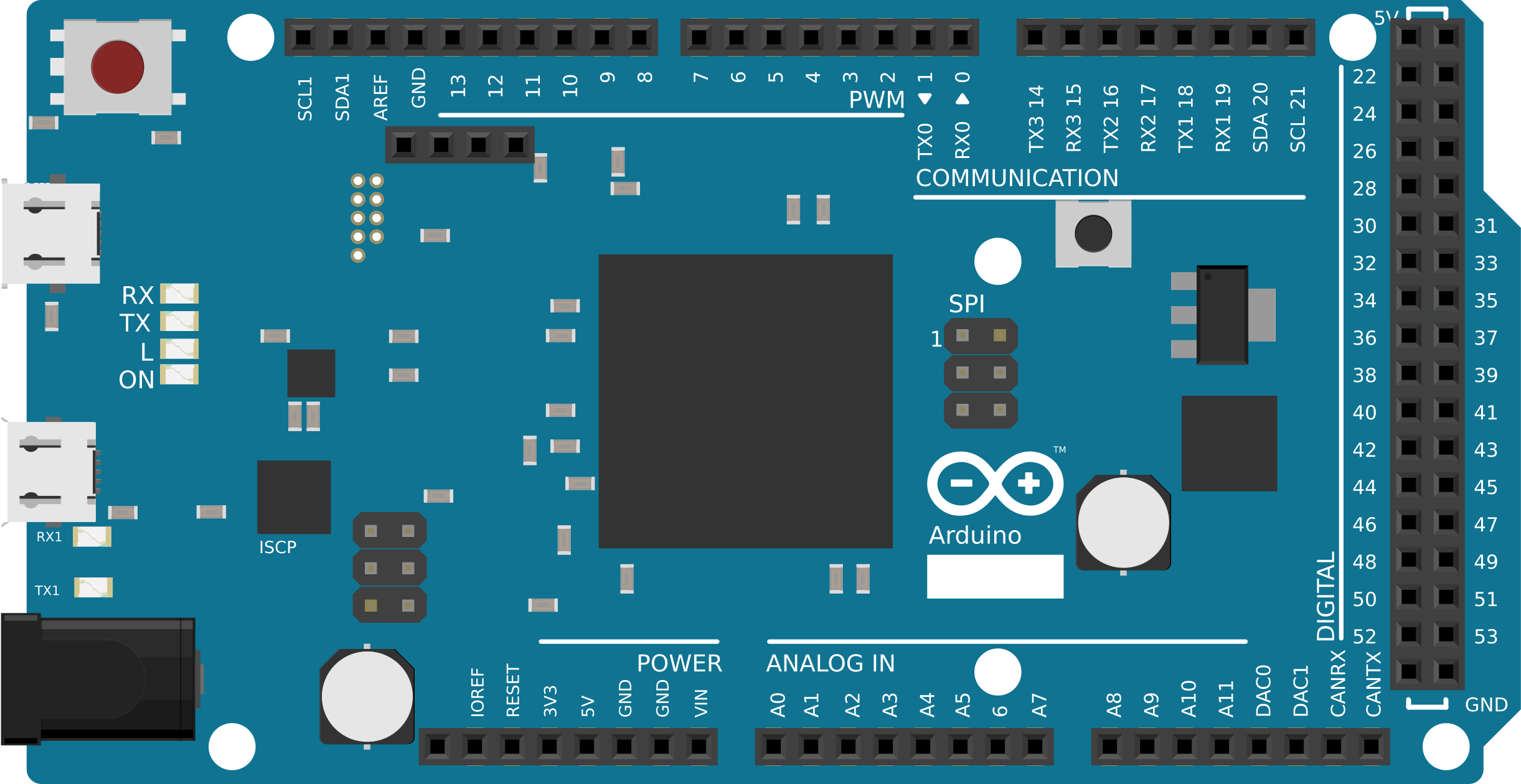
 Design with Arduino Due in Cirkit Designer
Design with Arduino Due in Cirkit DesignerIntroduction
The Arduino Due is a powerful microcontroller board based on the Atmel SAM3X8E ARM Cortex-M3 CPU. As the first Arduino board to feature a 32-bit ARM core microcontroller, it represents a significant step up in capabilities from the traditional 8-bit microcontroller boards such as the Arduino Uno. The Due is ideal for projects that require more computational power, memory, and a variety of I/O interfaces, including applications in robotics, 3D printing, and complex sensor networks.
Explore Projects Built with Arduino Due
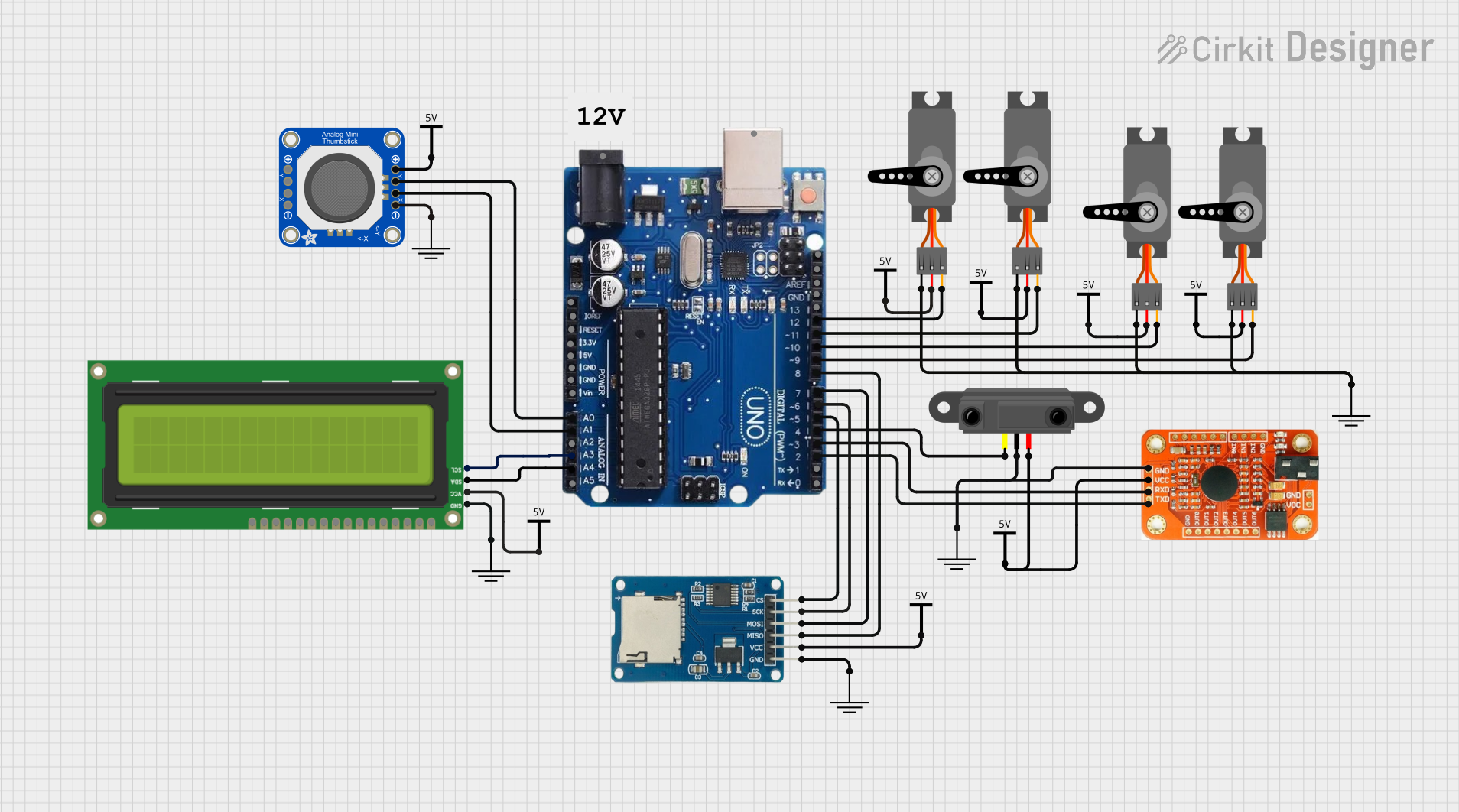
 Open Project in Cirkit Designer
Open Project in Cirkit Designer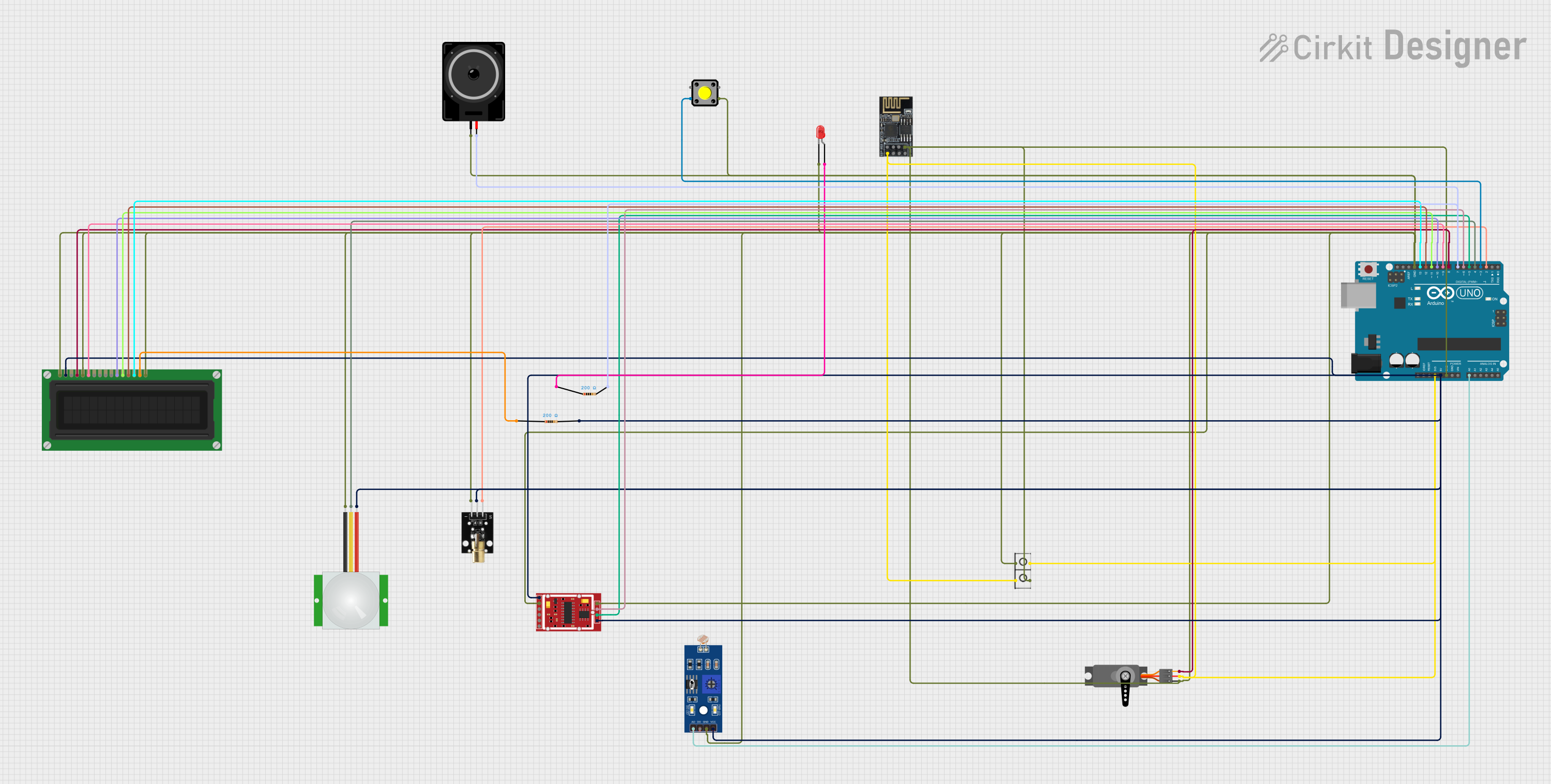
 Open Project in Cirkit Designer
Open Project in Cirkit Designer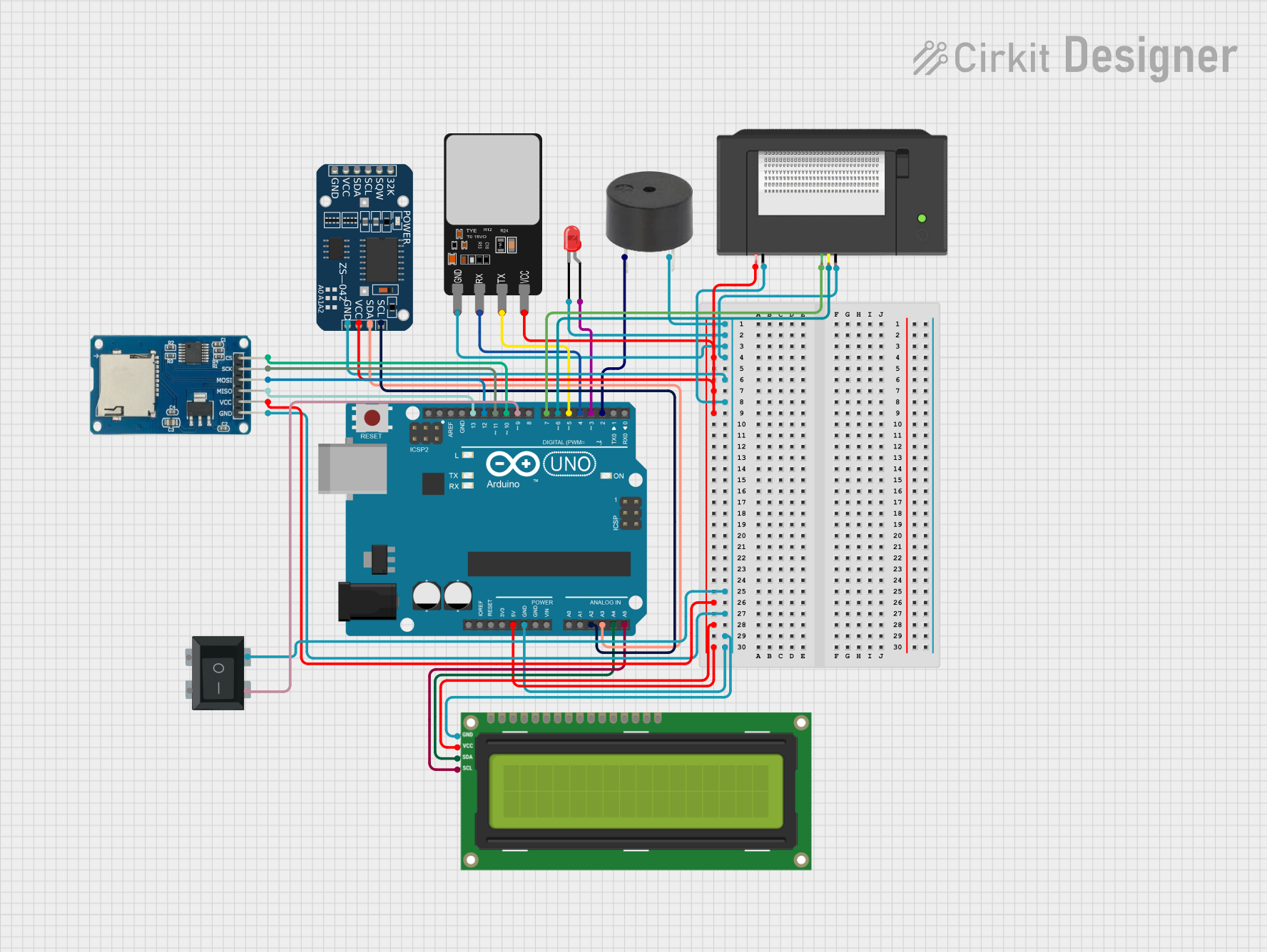
 Open Project in Cirkit Designer
Open Project in Cirkit Designer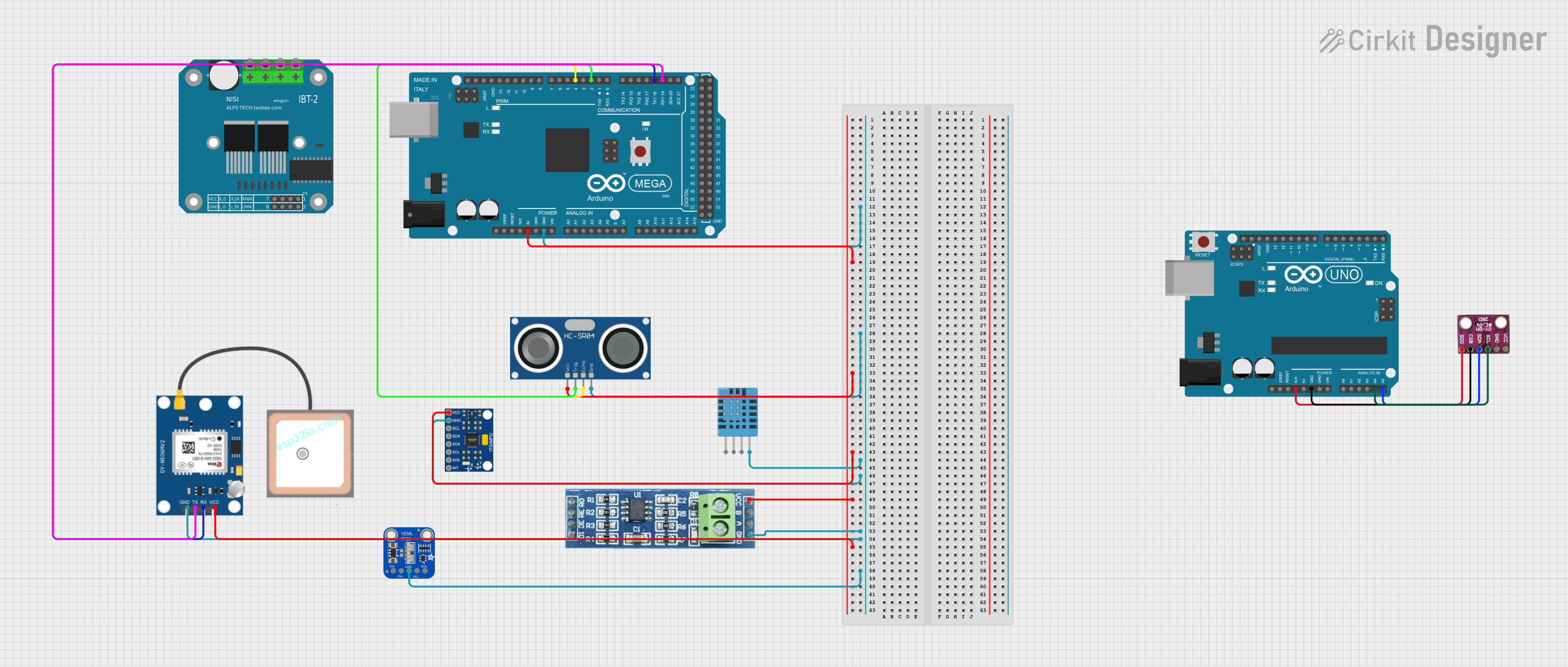
 Open Project in Cirkit Designer
Open Project in Cirkit DesignerExplore Projects Built with Arduino Due

 Open Project in Cirkit Designer
Open Project in Cirkit Designer
 Open Project in Cirkit Designer
Open Project in Cirkit Designer
 Open Project in Cirkit Designer
Open Project in Cirkit Designer
 Open Project in Cirkit Designer
Open Project in Cirkit DesignerTechnical Specifications
Key Technical Details
- Microcontroller: AT91SAM3X8E
- Operating Voltage: 3.3V
- Input Voltage (recommended): 7-12V
- Input Voltage (limits): 6-16V
- Digital I/O Pins: 54 (of which 12 provide PWM output)
- Analog Input Pins: 12
- Analog Output Pins (DAC): 2
- Total DC Output Current on all I/O lines: 130 mA
- DC Current for 3.3V Pin: 800 mA
- DC Current for 5V Pin: 800 mA
- Flash Memory: 512 KB all available for the user applications
- SRAM: 96 KB (two banks: 64KB and 32KB)
- Clock Speed: 84 MHz
Pin Configuration and Descriptions
| Pin Number | Function | Description |
|---|---|---|
| 1-54 | Digital I/O | Digital input/output pins, PWM capable on 12 pins |
| A0-A11 | Analog Input | Analog input pins |
| DAC0, DAC1 | Analog Output | Digital-to-analog converter outputs |
| CANRX | CAN Bus Receive | CAN bus receive pin |
| CANTX | CAN Bus Transmit | CAN bus transmit pin |
| SDA1, SCL1 | I2C 1 | I2C bus for communication with I2C devices |
| SDA, SCL | I2C 0 | Secondary I2C bus |
| TX0-RX0 | UART 0 | Serial communication pins |
| TX1-RX1 | UART 1 | Additional serial communication pins |
| TX2-RX2 | UART 2 | Additional serial communication pins |
| TX3-RX3 | UART 3 | Additional serial communication pins |
| MISO, MOSI, SCK | SPI | SPI communication pins |
| SS0-SS3 | SPI Slave Select | Slave select pins for SPI communication |
Usage Instructions
Integrating the Arduino Due into a Circuit
To use the Arduino Due in a circuit:
- Powering the Board: Connect a power supply to the board through the barrel jack or the VIN pin. The recommended voltage is between 7V and 12V.
- Connecting I/O: Attach sensors, actuators, and other peripherals to the digital and analog pins as required by your project.
- Programming the Board: Connect the board to a computer using a micro-USB cable to upload sketches.
Important Considerations and Best Practices
- Voltage Levels: The Due operates at 3.3V. Applying voltages higher than 3.3V to any I/O pin could damage the board.
- Maximum Current: Do not draw more than 130 mA from all I/O lines, 800 mA from the 3.3V pin, or 800 mA from the 5V pin.
- ESD Sensitivity: As with all microcontroller boards, handle the Due with care to avoid electrostatic discharge (ESD) damage.
Example Code for Arduino Due
Here is a simple example of blinking an LED connected to pin 13 on the Arduino Due:
// The setup function runs once when you press reset or power the board
void setup() {
// initialize digital pin 13 as an output.
pinMode(13, OUTPUT);
}
// The loop function runs over and over again forever
void loop() {
digitalWrite(13, HIGH); // turn the LED on (HIGH is the voltage level)
delay(1000); // wait for a second
digitalWrite(13, LOW); // turn the LED off by making the voltage LOW
delay(1000); // wait for a second
}
Troubleshooting and FAQs
Common Issues
- Board not recognized: Ensure the micro-USB cable is properly connected and the computer has the necessary drivers installed.
- Sketch not uploading: Check for correct board and port selection in the Arduino IDE. Also, ensure the bootloader is not corrupted.
- Unexpected behavior: Verify that all connected components are compatible with 3.3V logic levels.
Solutions and Tips for Troubleshooting
- Driver Installation: Make sure to install the latest drivers for the Due's Atmel SAM3X8E chip.
- Power Supply: Use a stable power source to prevent resets during high-current operations.
- Reset: Press the reset button on the board to restart your program if the Due becomes unresponsive.
FAQs
Q: Can I use 5V sensors with the Due? A: You must use level shifters or voltage dividers to connect 5V sensors to the Due's 3.3V pins.
Q: Is the Due compatible with all Arduino shields? A: Not all shields are compatible due to the Due's 3.3V operating voltage. Check the shield specifications for compatibility.
Q: How can I increase the Due's memory? A: The Due's memory is not expandable. Optimize your code or consider using external storage like an SD card for additional space.